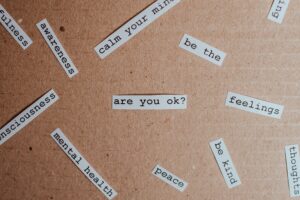
Can culture, alongside medical treatments, help improve mental health around Europe? It is not a new concept, and more projects have been designed to accompany therapies for some time now. Recently, even the EU Commission has undertaken a broader outlook by adding a new pillar to the European Health Union. Presented in June, its “new comprehensive approach to mental health” includes, among others, a more direct link between the two aspects while looking at “Mental health across all policies to recognise the multifaceted risk factors of mental-ill health.”
Undeniably, medical interventions and psychological support are crucial and, in many cases, irreplaceable against what many see as a pandemic in itself. But along with professional (medical) treatments, diverse initiatives show how methods that include culture – art or music, for example – can be beneficial in dealing more extensively with the health challenges of these times.
A major concern
To give some context, according to data, 1 in 6 people in the EU suffered from some form of mental health struggle pre-pandemic. In the last few years, the situation has worsened, also triggered by worries about the soaring costs of living, the threat of war at the EU’s borders, and ongoing economic and climatic crises, to give some examples.
The situation is widespread and affects not only those whose finances are extremely tight or are less likely to have access to cures, prevention and good quality treatments. With 48% of EU27 reporting difficulties in making ends meet – as calculated in the 5th round of the “Living, working and COVID-19” survey (Eurofound) – mental well-being has become a major concern across all member states. It is then particularly worrying in 10 EU’s neighbouring countries considered by the research. Here, where 81% of the citizens struggle to manage financially (compared to 48% among the EU’s population), 75% of those aged between 18 and 44 are at risk of depression.
Moreover, OECD data on the consumption of antidepressants highlight a similar trend. In 20 years from 2000, in 18 European countries, the use of antidepressants has increased nearly 2 ½ times. Numbers that further speak of the dramatic rise in the levels of anxiety and depression* especially starting from the Covid-19 pandemic.
At the same time, though, a wider recognition of the threats posed on a personal and social scale by poor mental health has become a shared notion. Furthermore, it is today recognised that higher levels of well-being have an economic value, even in terms of skills development and the unfolding of unused talent – particularly of women. Moreover, partly due to social distancing and its consequences, the stigma surrounding mental health has somewhat decreased in a few working contexts.
The effect of culture on mental well-being
The EU Commission is linking art, culture and mental health to look for different and viable ways of intervention. With the awareness that being active in any form of art, just as being physically active, has health benefits and is an effective tool to prevent and even intervene in situations of poor mental well-being. Across Europe, several initiatives already testify that. For example, data from a Danish program of singing lessons designed for new mothers who suffered from postpartum depression show an improved bond between mother and child, creating a higher level of optimism and calm. Overall, they contributed to women’s better mental health.
The latest report by CultureForHelath, a project co-funded by the EU Commission, draws similar results, confirming how “creating art itself and participating in cultural activities is beneficial to our health and productivity” and affirming “that culture ought to be an integral part of the EU’s health strategy. Advancing research on this subject and increasing investments in prevention and health promotion with the support of culture is critical to fostering welfare in individuals and communities across the EU.”
From the Netherlands to Italy, Spain to Finland, the initiatives listed in CultureForHealth’s database interest all demographics and ways of expression. One initiative, for example, used funambulism to help dynamically improve physical and mental well-being. Another helped the re-skilling of participants through the arts seen as professional fields. And another still investigated the relationship between contemporary art and health by involving spectators, doctors and patients around the theme of personal and social well-being.
Culture as a tool for mental well-being
Promoting creativity and artistic expression with an eye to positive mental health attitudes can impact societies and is a common thread that unites most programs offered in the EU member states. Because “Obstacles to good mental health cannot be overcome within the health system alone,” as the Commission’s recent Communication “A Comprehensive Approach to mental health” underlines, further steps need to be taken. In the document presented in June, the Commission announced its plan to start a (voluntary) collaboration process in 2024, aiming to enhance the link between art and mental well-being and then integrate some form of cultural activity into the mental health support system.
In practice, it also announced “20 flagship initiatives and €1.23 billion in EU funding from different financial instruments, (to) support Member States putting people and their mental health first.” Also, through culture and creativity.
—
* The situation is more complex than just the picture drawn from numbers. Since different factors concur in the definition of these data, they cannot alone be proof of the actual spread of mental illnesses. Yet, the increase in the use of specific drugs is robust and is most likely related to the worsening mental well-being of the citizens.
***
Alley Oop’s newsletter
Every Friday morning Alley Oop arrives in your inbox with news and stories. To sign up, click here.
If you want to write to or contact Alley Oop’s editorial team, email us at alleyoop@ilsole24ore.com.